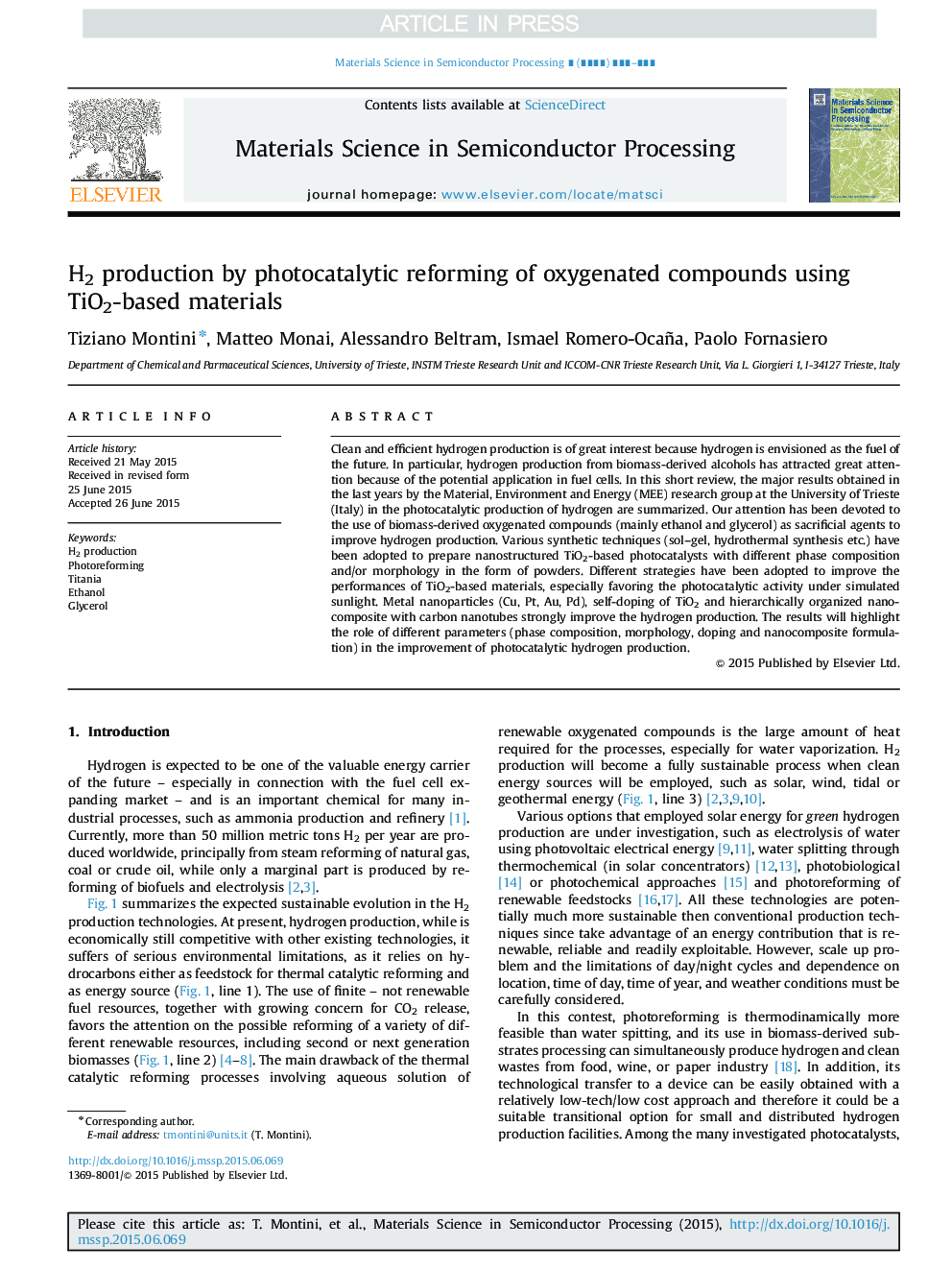| Article ID | Journal | Published Year | Pages | File Type |
|---|---|---|---|---|
| 10407112 | Materials Science in Semiconductor Processing | 2016 | 9 Pages |
Abstract
Clean and efficient hydrogen production is of great interest because hydrogen is envisioned as the fuel of the future. In particular, hydrogen production from biomass-derived alcohols has attracted great attention because of the potential application in fuel cells. In this short review, the major results obtained in the last years by the Material, Environment and Energy (MEE) research group at the University of Trieste (Italy) in the photocatalytic production of hydrogen are summarized. Our attention has been devoted to the use of biomass-derived oxygenated compounds (mainly ethanol and glycerol) as sacrificial agents to improve hydrogen production. Various synthetic techniques (sol-gel, hydrothermal synthesis etc.) have been adopted to prepare nanostructured TiO2-based photocatalysts with different phase composition and/or morphology in the form of powders. Different strategies have been adopted to improve the performances of TiO2-based materials, especially favoring the photocatalytic activity under simulated sunlight. Metal nanoparticles (Cu, Pt, Au, Pd), self-doping of TiO2 and hierarchically organized nanocomposite with carbon nanotubes strongly improve the hydrogen production. The results will highlight the role of different parameters (phase composition, morphology, doping and nanocomposite formulation) in the improvement of photocatalytic hydrogen production.
Related Topics
Physical Sciences and Engineering
Engineering
Electrical and Electronic Engineering
Authors
Tiziano Montini, Matteo Monai, Alessandro Beltram, Ismael Romero-Ocaña, Paolo Fornasiero,
